Historical images
| What happened this month | Image | Title | Description | Posted |
|---|---|---|---|---|
| ...59 years ago | 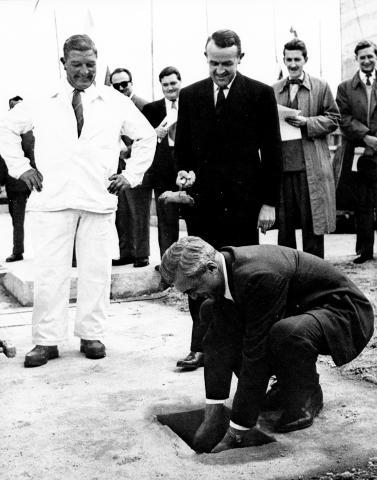
|
June 1955 – Laying the foundation stone of CERN | “On this tenth day of June, one thousand nine hundred and fifty five, on ground generously given by the Republic and Canton of Geneva, was laid the foundation stone of the buildings of the headquarters and the laboratories of the European Organization for Nuclear Research, the first European institution devoted to co-operative research for the advancement of pure science” The stone was laid by the organization’s first Director-General, Felix Bloch, and speeches referred to the challenge of setting up the new laboratory, the cooperation and goodwill that had made it possible and a vision for the future. The headquarters agreement with the Swiss Federation was signed the following morning, and in the afternoon the grounds of CERN were thrown open to the public. Construction had started long before the foundation stone, of course, so there was already plenty for visitors to see, and staff were on hand to act as guides. Want to know more? The commemorative booklet for the Foundation Stone Ceremony and the Open Day flyer are available here. |
|
| ...48 years ago | |
February 1966 – A CERN stamp | On 21 February 1966 the Swiss Postal Authorities issued a 50 centime postage stamp in honour of CERN. Five Swiss artists visited CERN and were shown around the site, then each presented two designs. The judges selected a design by H. Kumpel showing the flags of the thirteen Member States of CERN superimposed on a bubble chamber photograph. The flags are arranged to represent the approximate outline of the Swiss border. A further commemorative stamp was produced by France in 1977 for the inauguration of the Super Proton Synchrotron, and another Swiss stamp marked CERN’s 50th anniversary in 2004. |
|
| ...86 years ago | 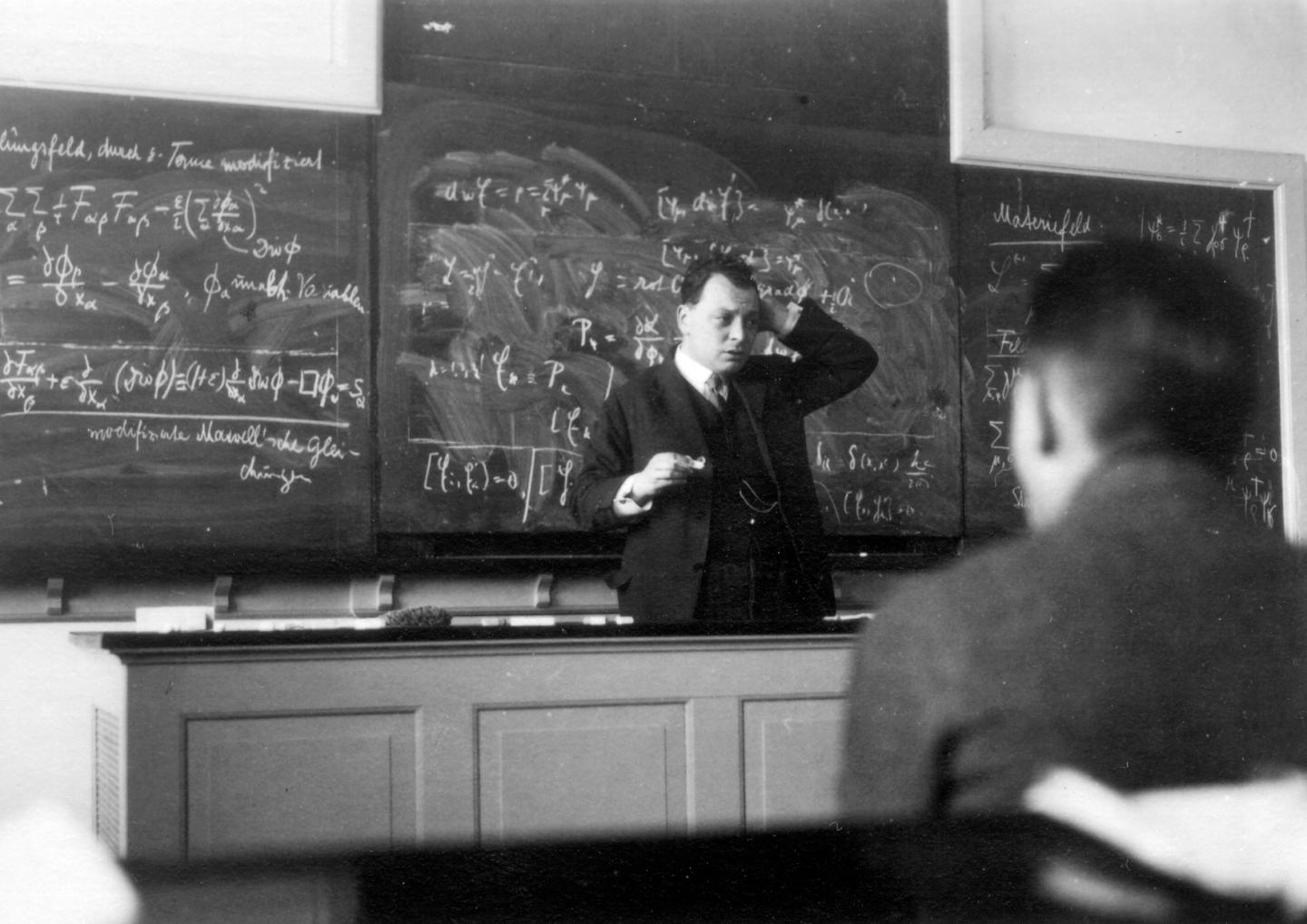
|
January 1928 – Wolfgang Pauli appointed professor at ETH Zürich | Despite some reservations about his lecturing style, Wolfgang Pauli was appointed professor of theoretical physics at the ETH, Zürich, on 10 January 1928. He started on 1 April at a basic annual salary of 15,000 francs. Pauli’s lectures could sometimes be challenging. The equations in this photo (taken in Copenhagen in 1929) look fairly legible, but K. Alex Müller recalls his habit of standing at the centre of the blackboard and writing equations around himself, almost in circles, rather than horizontally. Students in the ETH’s famous lecture room 6c tended to sit in two groups, to his left and his right, in order to be able to see round him! Markus Fierz considered Pauli the sort of teacher whose defect it is to think about their subject while lecturing; consequently, the listener participates in a sort of soliloquy which, since it is not really addressed to him, is sometimes barely intelligible. But - Fierz added - this taught the student, above all, to think critically about a theory. |
|
| ...67 years ago | 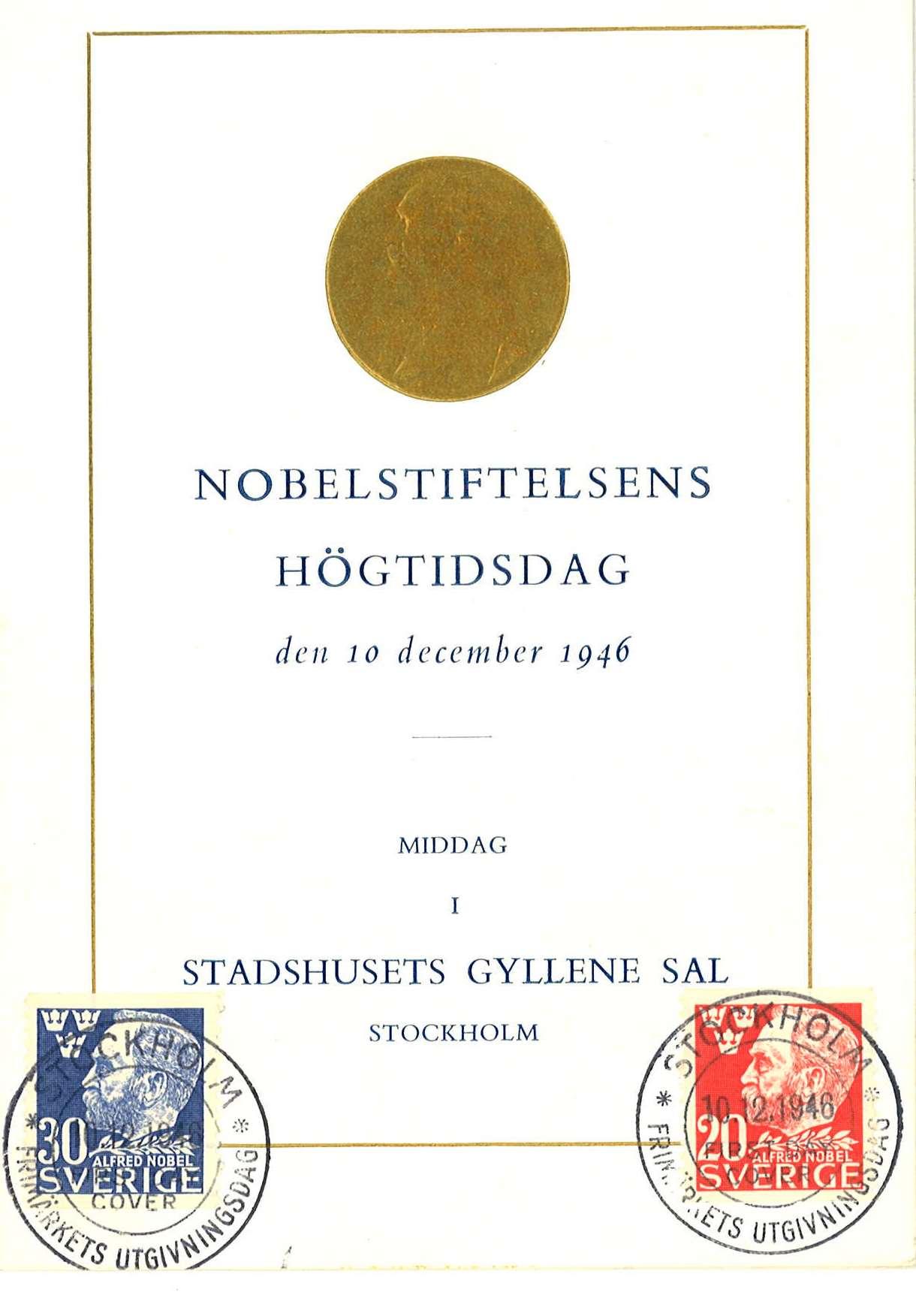
|
December 1946 – Pauli travels to Sweden to receive the Nobel prize | The date on this menu for Wolfgang Pauli’s Nobel prize festivities is 1946, yet he was awarded the physics prize for his exclusion principle in 1945. In a letter to Niels Bohr (25 November 1945) he explains the delay: “Dear Bohr! It was a great exciting surprise that the Nobel prize was awarded to me this year although I had thought already a week earlier, when the congratulation telegramm of you and your wife arrived, that it was a good omen … The decision, whether or not I should go to Stockholm on December 10 was really not easy. The American authorities kindly offered me exit and re-enter permits for a trip to Stockholm and back for this very particular purpose. Considering all circumstances of the present situation, particularly the possibility of a delay by such a trip of my getting naturalized, I finally decided to postpone my participation in the ceremony in Stockholm to next year after having heard that Stern and Rabi are doing the same…” Pauli was working in the USA during the war, and US naturalization was particularly important to him because his application for Swiss nationality had been turned down in 1938 and was not granted until 1949. |
|
| ...54 years ago | 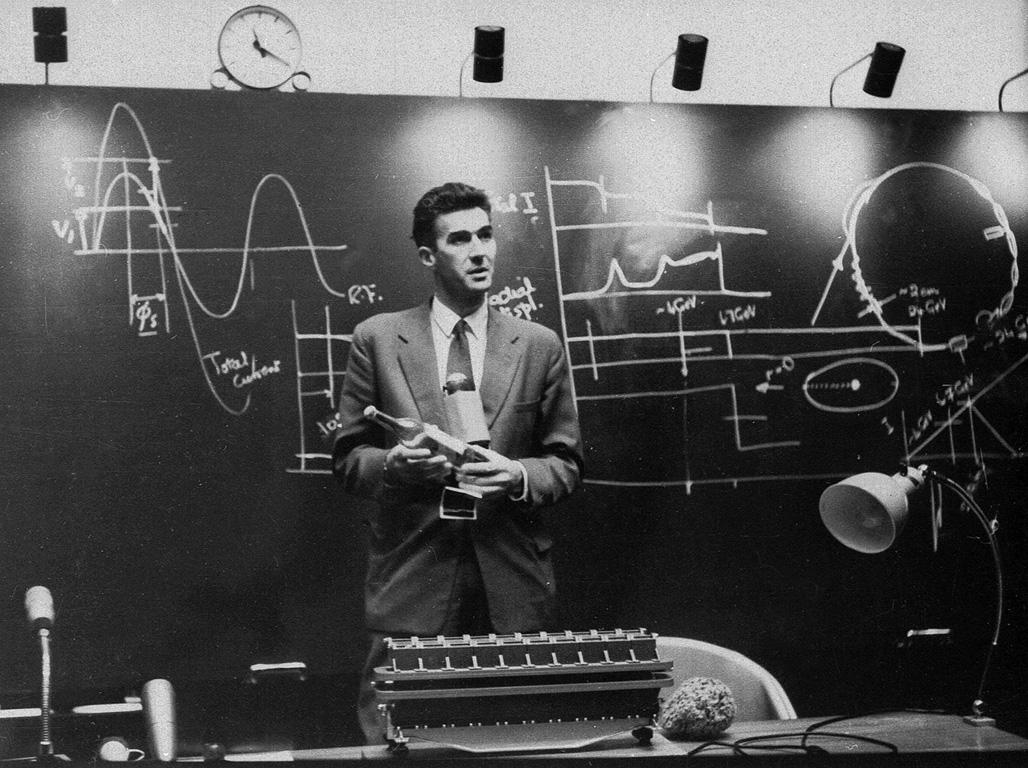
|
November 1959 – The Proton Synchrotron is up and running | The Large Hadron Collider (LHC) is the world’s biggest and most powerful particle accelerator, but for a few months in 1959 the Proton Synchrotron (PS) shared the same distinction. The PS reached its full design energy of 24 GeV (later increased to 28 GeV) during the night of 24 November 1959, and the following morning project leader John Adams announced the achievement to staff in CERN’s main auditorium. In this photo he holds a vodka bottle that he had been given during a trip to the Joint Institute for Nuclear Research in Dubna with instructions that the contents should be drunk when CERN passed the Russian Synchrophasotron’s world-record energy of 10 GeV. The bottle in his hand contains a photo of the 24 GeV pulse ready to be sent back to the Soviet Union! |
|
| ...56 years ago | 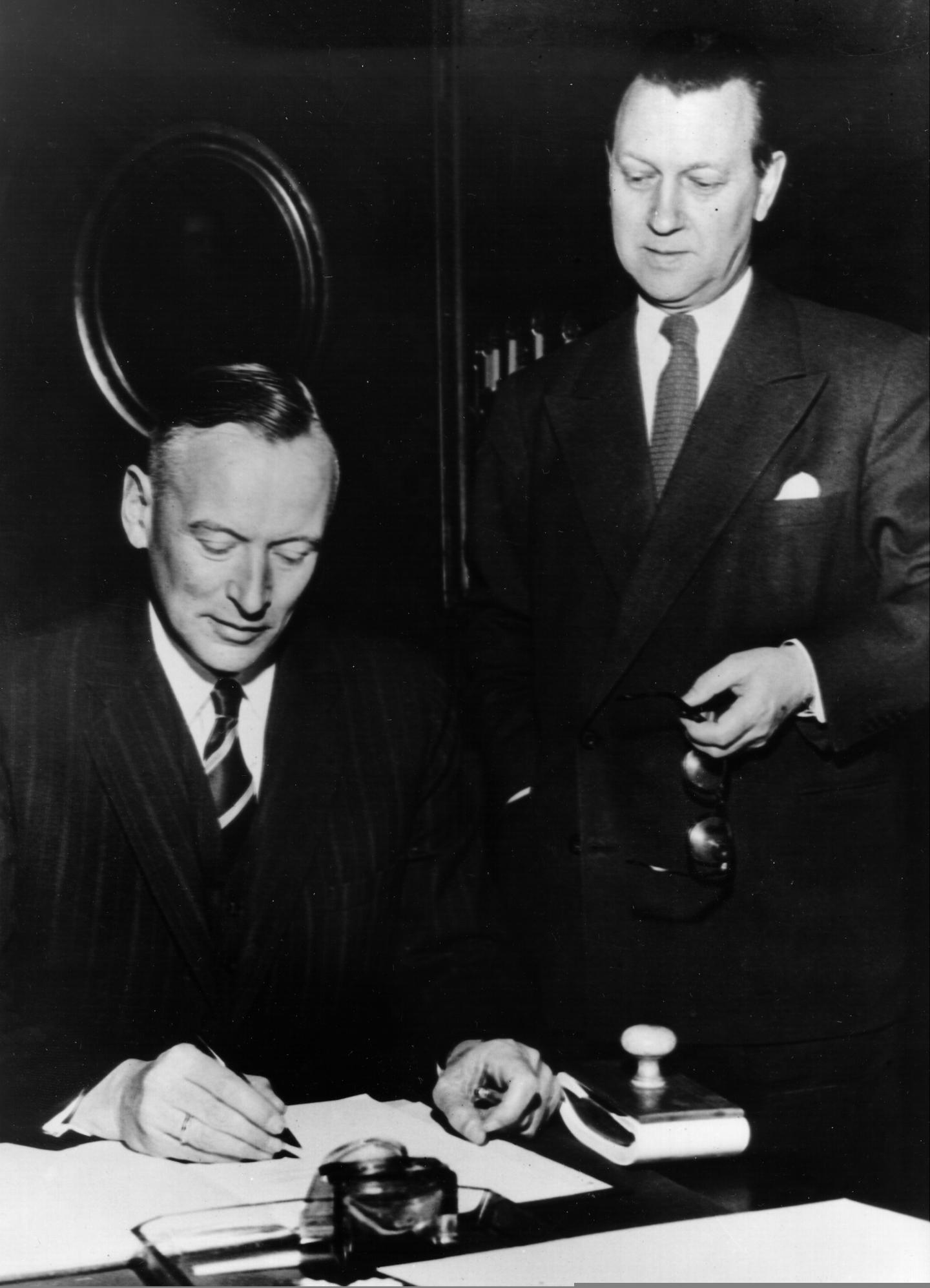
|
October 1957 – Closure of CERN’s Theoretical Study Division in Copenhagen | During the construction of CERN in the 1950s, most staff were lodged in temporary offices nearby. But the theoretical physics group (one of three study groups set up in 1952 as part of the ‘provisional CERN’) began life at the Theoretical Physics Institute, University of Copenhagen. Niels Bohr led the group until September 1954, then handed over to Christian Møller. The photo shows CERN’s Director General Cornelius Bakker signing an agreement on the legal status of the group in Denmark in 1956. It was always intended that the group would relocate back to the main CERN site over a period of five years, and the first theorists came to Geneva in 1954. They were based first at the University of Geneva, then in barracks near the airport, before finally moving to the new site in Meyrin. The Theory Group in Copenhagen officially closed on 1 October 1957. |
|
| ...86 years ago | 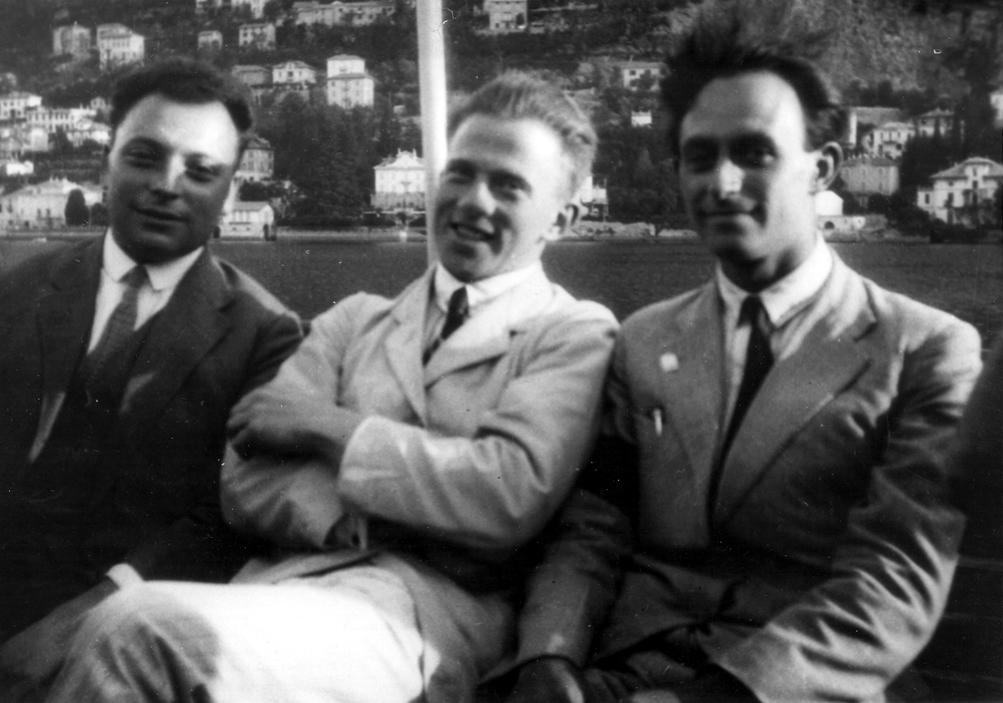
|
September 1927 – The Como congress | Wolfgang Pauli, Werner Heisenberg and Enrico Fermi relax on Lake Como during the 1927 International Conference on Physics. The 1927 conference (held in Como to commemorate the 100th anniversary of the death of Alessandro Volta) is famous for Niels Bohr’s first presentation of his ideas on complementarity. His lecture “The Quantum Postulate and the Recent Development of Atomic Theory” became the basis of the Copenhagen interpretation of quantum mechanics; a fuller version was presented at the Fifth Solvay Conference (Brussels) in October. Bohr had discussed his ideas with colleagues both before and after these conferences, and Pauli was particularly involved in the preparation of the final manuscript. |
|
| ...61 years ago | 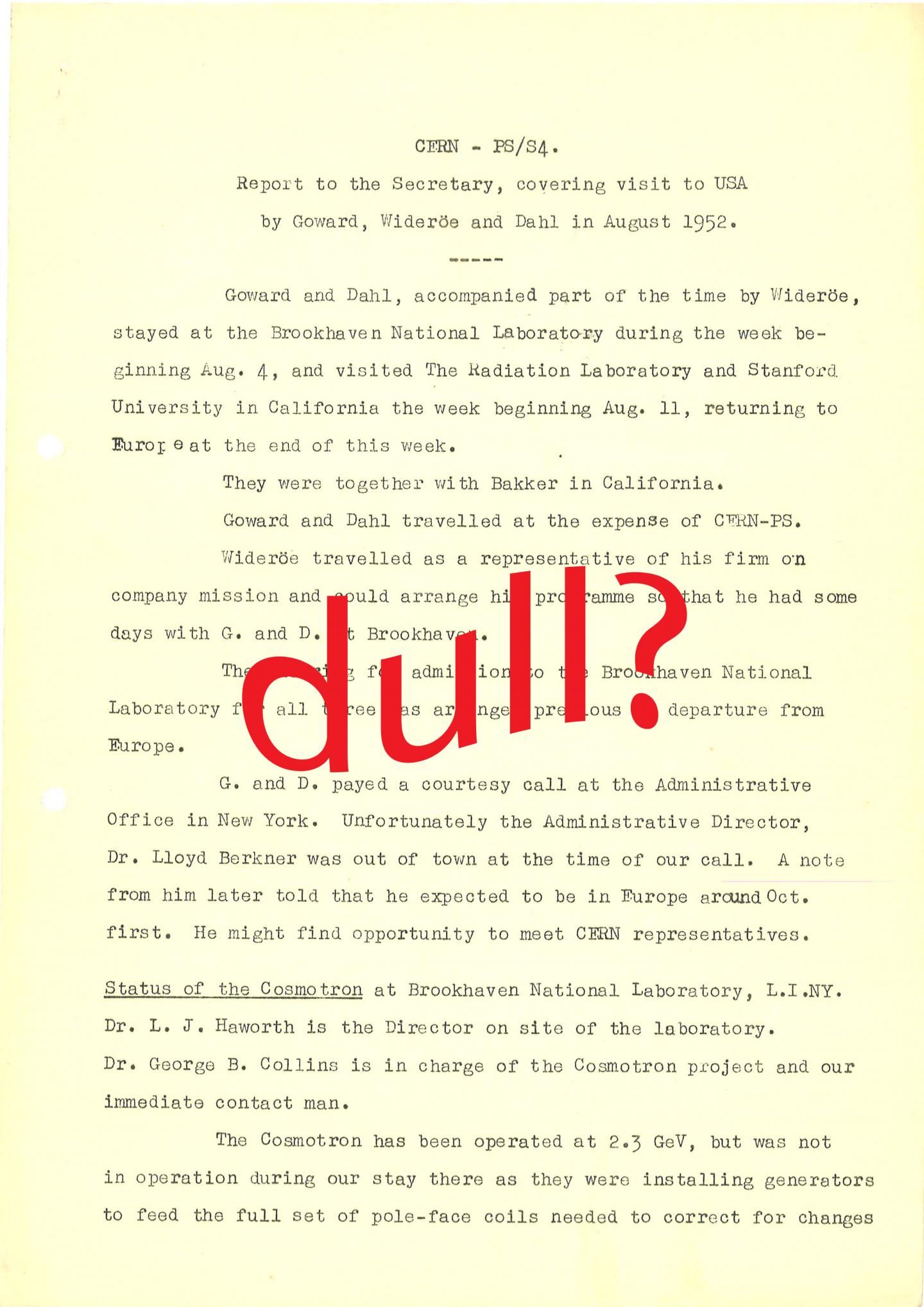
|
August 1952 – Redesigning the Proton Synchrotron | Too often trip reports are just boring administrative documents, but this one caused a radical rethink of the design for CERN’s Proton Synchrotron. Suddenly a relatively straightforward engineering challenge became a development project for an untested idea. Plans were already underway for CERN’s large accelerator, a scaled-up version of Brookhaven’s Cosmotron, when Odd Dahl, Frank Goward and Rolf Wideröe visited Brookhaven in 1952. There they joined in discussions about a new strong-focusing (or alternating gradient focusing) technique, which meant smaller magnets could be used to guide particles round an accelerator provided they were arranged with their field gradients facing alternately inwards and outwards instead of the conventional outward-facing alignment. Dahl recommended laying aside plans for a 10 GeV accelerator for the time being in order to investigate the idea further (CERN-PS-S4). It was a risky decision to follow this unexplored route, but one that paid off by allowing construction of a much more powerful machine at little extra cost. When the Proton Synchrotron came into operation in November 1959 it had an energy of 24 GeV, later increased to 28 GeV. |
|
| ...57 years ago | 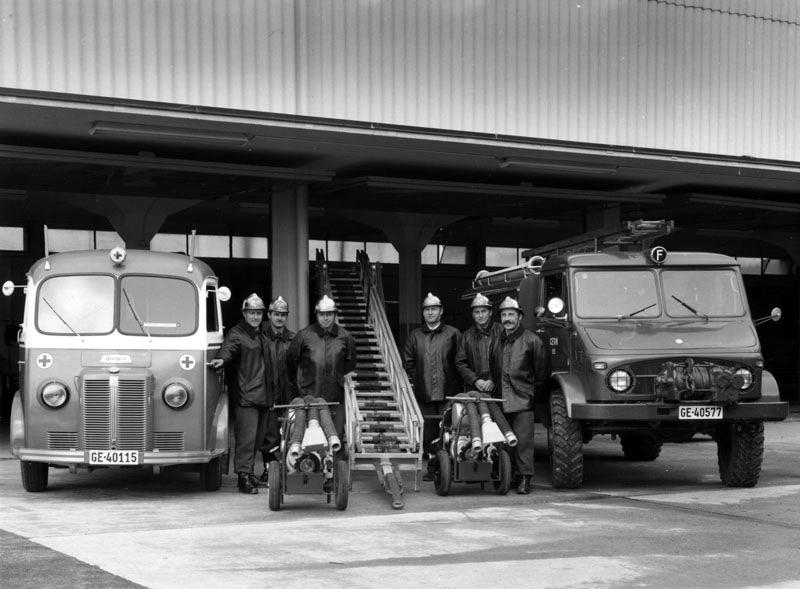
|
July 1956 – Birth of the CERN fire brigade | Safety is top priority in any scientific research laboratory, and fire prevention was an important issue from the earliest days of CERN. The newly constructed buildings were fitted with smoke detectors, and voluntary fire brigades and first aid teams were set up among staff members. The appointment of CERN’s first fire service chief, Pierre Vosdey, in July 1956 marked the start of the professional firefighting service that CERN enjoys today. Experienced firemen were recruited, who trained more volunteers. The service expanded during 1957, providing 24-hour cover and acquiring a fire engine, an ambulance, a 14 metre ladder, a motor pump, smoke detectors and 250 fire extinguishers. This photo shows some of the team in 1959. Today the CERN fire brigade has around 50 members and continues to work closely with the Swiss and French fire services to ensure safety on-site. |
|
| ...57 years ago | 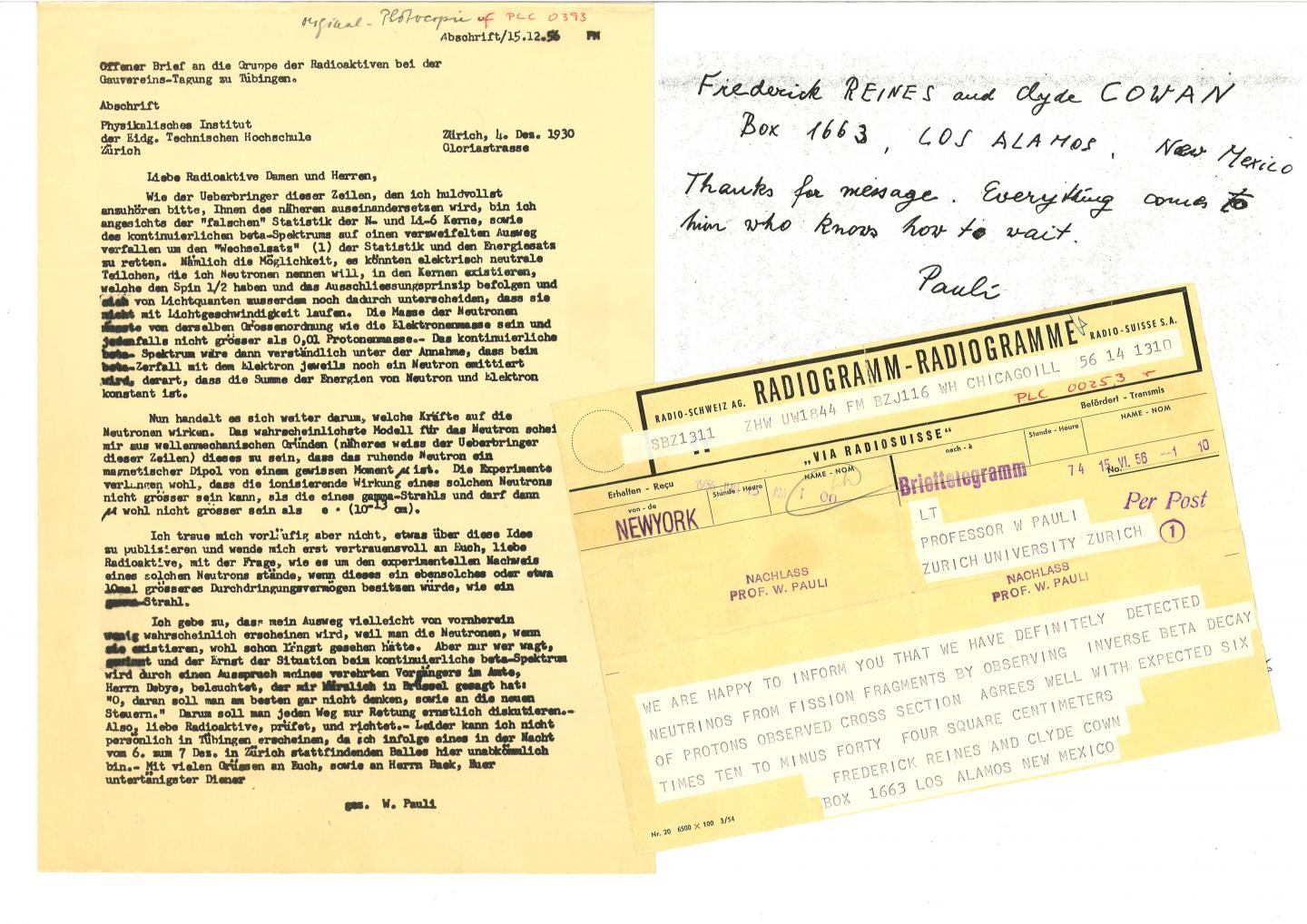
|
June 1956 – Neutrinos detected at last! | On 14 June 1956 a telegram from Frederick Reines and Clyde Cowan informed Wolfgang Pauli that neutrinos had been detected from fission fragments - nearly 26 years after Pauli first postulated the neutral particle as a solution to the missing energy during beta decay. Pauli had outlined his theory in a letter to the ‘Dear radioactive ladies and gentlemen’ at the Tübingen conference in December 1930, excusing his own absence from the conference on the grounds that he had to go to a dance in Zürich. The name “neutrino” was coined by Enrico Fermi in 1933. Apparently Pauli’s reply to the telegram did not arrive, so it survives only in the form of the draft sent by a secretary - Pauli simply says “Thanks for message. Everything comes to him who knows how to wait.” |
